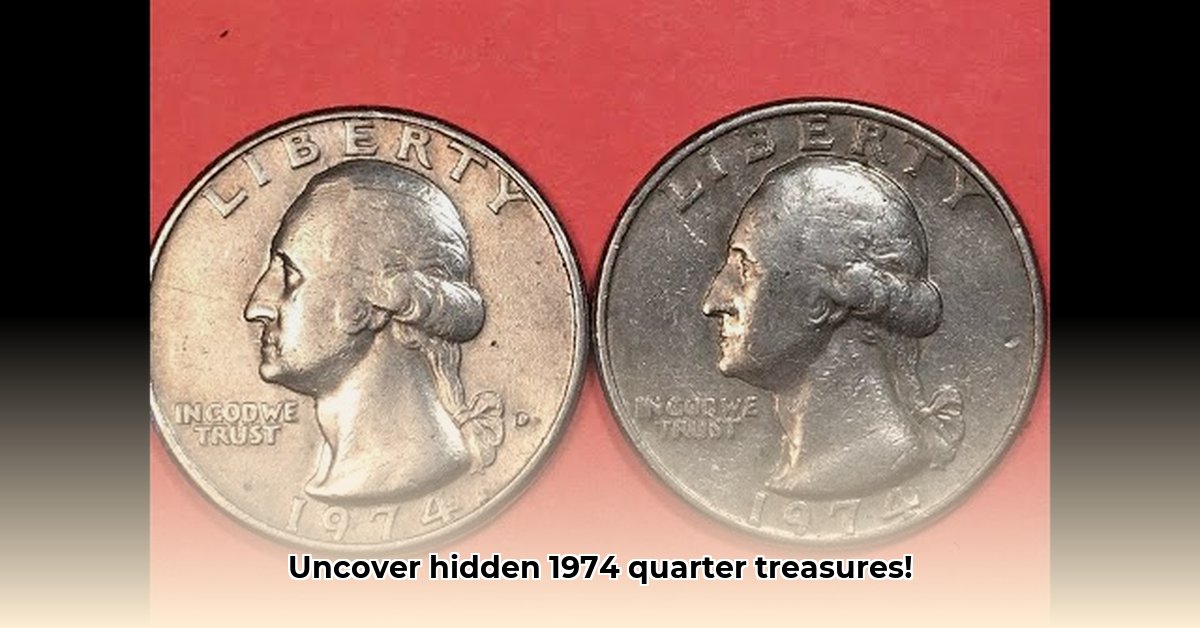
The 1974 quarter: a seemingly ordinary coin, yet it holds surprising potential value for collectors. This guide reveals how to determine its worth, covering mint marks, condition, and the exciting world of error coins. Whether you're a novice or a seasoned numismatist, this guide will equip you to assess your 1974 quarters and build a savvy collection.
Decoding the Clues: Mint Marks, Condition, and Errors
Three key factors dictate the value of a 1974 quarter: its mint mark, its condition (grade), and any minting errors. Let’s break down each:
Mint Marks: A Coin's Birth Certificate
Every 1974 quarter bears a tiny letter—the mint mark—indicating its origin. "P" signifies Philadelphia, "D" Denver, and "S" San Francisco. The "S" mint mark is particularly significant; far fewer 1974 quarters were produced in San Francisco, making them rarer and more valuable. This simple letter holds considerable weight! Did you find a "P," a "D," or the elusive "S"?
Condition: The Sheldon Scale and Coin Grades
Coin condition is judged using the Sheldon scale, a numerical system ranging from 1 (Poor) to 70 (Mint State 70, or MS70). A well-worn, circulated coin will receive a lower grade than a pristine, uncirculated specimen. The difference in value between a low-grade and high-grade coin is substantial. Here's a simplified look at the scale:
- MS60: Shows considerable wear, dull appearance.
- MS65: Minor imperfections, sharp details, good luster.
- MS70: Flawless; a perfect coin. Extremely rare!
Think of it like comparing a new car to a used one – the condition heavily influences the value. Intact details, a smooth surface, and vibrant color are hallmarks of a higher grade.
Error Coins: Mistakes That Add Value
Minting errors, those happy accidents of the minting process, create highly sought-after coins. These errors can significantly increase a coin's value. Some common types include:
- Off-Center Strikes: The coin's design is not perfectly centered.
- Broadstrikes: A portion of the coin is unusually wide.
- Die Cracks: Cracks on the die transfer to the coin, creating unique lines.
- Struck-Through Errors: A foreign object gets imprinted on the coin.
These errors are often subtle and require careful examination. Magnification can be very helpful!
Estimating Value: A Multi-Factored Approach
Determining the value of your 1974 quarter is an assessment of the interaction of mint mark, condition, and errors. The table below offers estimated value ranges; remember, these are approximations, and actual prices fluctuate based on market conditions and individual sales.
| Mint Mark | Grade | Error Type | Estimated Value Range |
|---|---|---|---|
| P | MS65 | None | $1 - $5 |
| D | MS65 | None | $1 - $5 |
| S | MS65 | None | $5 - $15 |
| P | MS70 | None | $25 - $50 |
| D | MS70 | None | $25 - $50 |
| S | MS70 | None | $100 - $200 |
| Any | Any | Significant Error | Highly Variable |
Online resources and auction sites offer additional pricing insights, providing valuable comparative data.
Building Your Collection: A Step-by-Step Guide
Whether you're a beginner or an experienced collector, building a 1974 quarter collection is a rewarding pursuit.
- Start with the Basics: Beginners should focus on identifying mint marks and grades, using readily available resources and comparing their coins online.
- Learn to Grade: Practice grading using online resources and comparison images to develop your eye for detail and coin condition.
- Seek Expert Advice: If unsure about a coin's grade or whether it has an error, consult experienced numismatists or professional grading services.
- Advanced Collecting: Experienced collectors can focus on high-grade coins and error coins, leveraging specialized dealers and online marketplaces.
- Reputable Sources: Always acquire coins from reputable dealers to ensure authenticity.
Remember, building a successful collection requires patience, research, and a keen eye for detail. Enjoy the process of discovery!